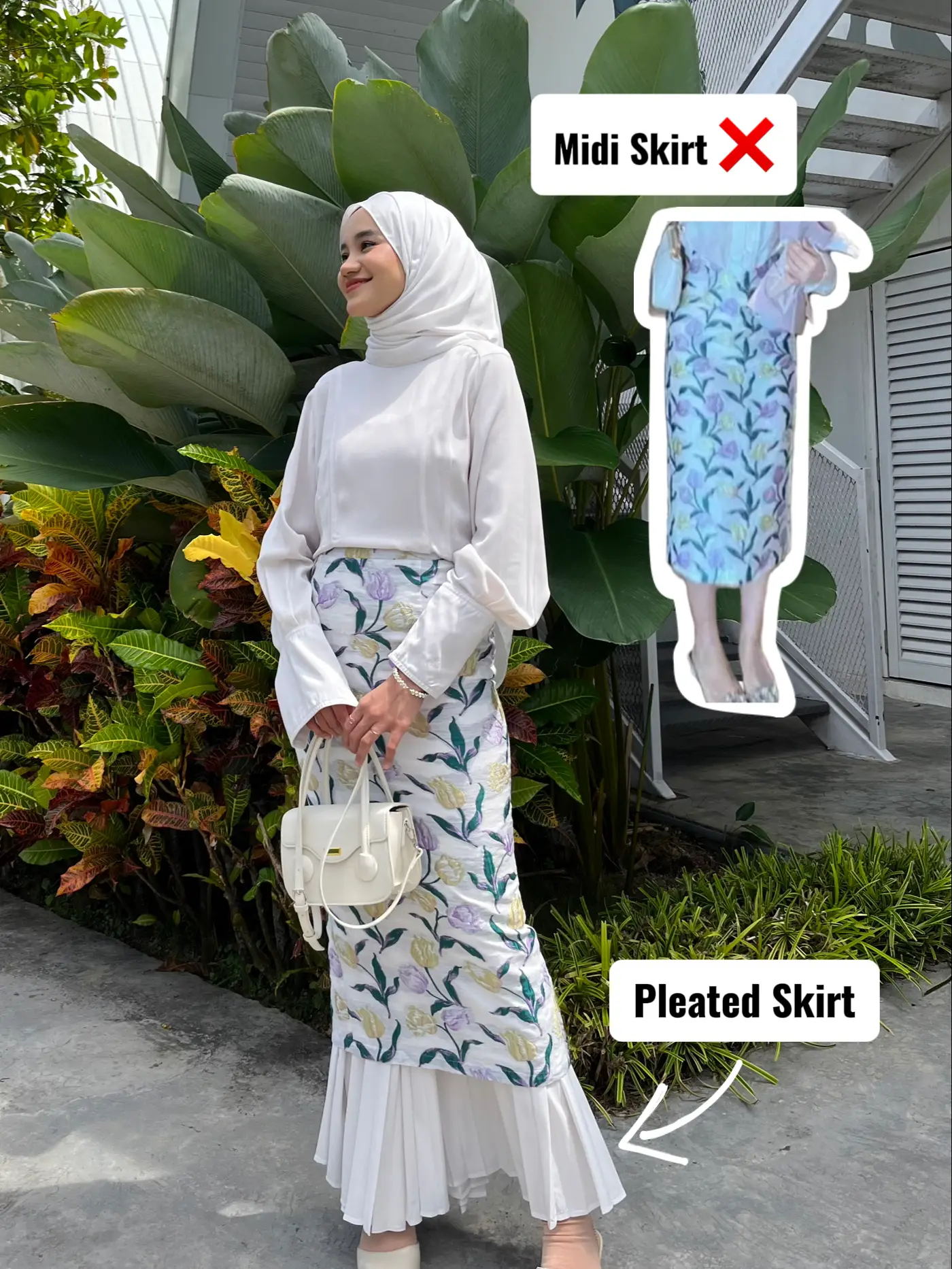Skirts are not inherently haram in Islam. Modesty and proper coverage determine their permissibility.
Islamic teachings emphasize modesty in attire for both men and women. Women are encouraged to wear clothing that covers their body appropriately, leaving only the face and hands visible. Skirts can be worn if they are long enough to cover the legs and are not tight or revealing.
Cultural differences and individual interpretations may influence what is considered modest. It’s important to consult knowledgeable sources within the Islamic community for personalized guidance. Many women choose to pair skirts with other modest garments to ensure they align with Islamic principles.
Introduction To Islamic Dress Code
Understanding the Islamic dress code is essential for many Muslims. The dress code provides guidelines for modest clothing and behavior. It is based on the teachings of the Quran and Hadith.
Cultural Context
The Islamic dress code varies across different cultures. What is considered modest in one culture may differ in another. For example, in some countries, women wear abayas or hijabs, while in others, they wear long skirts and loose tops.
Both men and women are encouraged to dress modestly. For men, this often means wearing loose pants and long shirts. For women, it means covering more of their body. The main goal is to avoid drawing unnecessary attention.
| Country | Common Clothing for Women | Common Clothing for Men |
|---|---|---|
| Saudi Arabia | Abaya and Hijab | Thobe |
| Pakistan | Shalwar Kameez and Dupatta | Shalwar Kameez |
| Indonesia | Long Skirt and Jilbab | Loose Pants and Shirt |
Religious Significance
The religious significance of the Islamic dress code is profound. It is not just about clothing, but also about behavior. Modest dress is seen as a way to show obedience to Allah.
Skirts can be part of modest clothing, but they must meet certain criteria. They should be loose and long enough to cover the legs. The goal is to avoid tight or revealing clothing.
Both men and women are asked to avoid clothes that draw attention. This includes avoiding flashy or extravagant styles. The focus is on humility and simplicity.
Credit: www.quora.com
Understanding Haram And Halal
In Islam, the concepts of Haram and Halal guide daily life. These terms classify actions, food, and clothing. Understanding these concepts helps make informed choices.
Basic Concepts
Haram means forbidden. Anything classified as Haram is strictly prohibited. Actions, foods, and behaviors can be Haram.
Halal means permissible. Anything classified as Halal is allowed. This includes actions, foods, and behaviors.
| Term | Meaning |
|---|---|
| Haram | Forbidden |
| Halal | Permissible |
Religious Texts
The Quran and Hadith guide what is Haram and Halal. They provide detailed instructions.
- The Quran is the holy book of Islam.
- The Hadith are sayings and practices of Prophet Muhammad.
The Quran has verses that explain clothing guidelines. It stresses modesty for both men and women.
The Hadith provides examples from the Prophet’s life. These examples help interpret Quranic guidelines.
For example, the Hadith highlights the importance of modesty in attire. This helps clarify what types of clothing are considered Halal or Haram.
Historical Perspective On Women’s Clothing
Understanding the history of women’s clothing helps us answer if skirts are haram. Different eras show varied styles and purposes behind women’s attire.
Ancient Times
In ancient cultures, women’s clothing varied greatly. Egyptian women often wore simple linen dresses. These dresses were practical and suited the hot climate.
Greek women wore tunics called chitons. These were draped and pinned at the shoulders. They allowed freedom of movement and were made from lightweight fabrics.
Roman women favored stolas. Stolas were long, draped garments. They symbolized a woman’s marital status.
| Culture | Typical Clothing |
|---|---|
| Egyptian | Linen Dresses |
| Greek | Chitons |
| Roman | Stolas |
Modern Era
In the 19th century, women wore long, heavy skirts. These skirts were part of elaborate dresses. They reflected a woman’s social status.
20th century brought shorter skirts. The 1920s saw the rise of flapper dresses. These dresses had knee-length skirts and were a symbol of freedom.
In the 1960s, mini skirts became popular. They represented a shift towards modern, liberal values. Today, skirts come in many styles and lengths.
- Maxi skirts
- Midi skirts
- Mini skirts
Modern women’s clothing reflects personal choice and cultural influences.

Credit: www.lemon8-app.com
Skirts In Different Islamic Cultures
Skirts have been a part of many cultures for ages. In Islamic cultures, the acceptance of skirts varies. This depends on traditions, interpretations of modesty, and local customs. Understanding these differences can help dispel myths and promote cultural appreciation.
Middle Eastern Norms
In many Middle Eastern countries, modesty is highly valued. Skirts are often worn, but with specific guidelines. They should be long, usually reaching the ankles. This ensures that the legs are covered, adhering to modesty standards.
Color and style also matter. Bright colors and tight fits are often avoided. Neutral and dark tones are more common. Headscarves or hijabs are typically paired with skirts. This completes the modest look in alignment with cultural norms.
South Asian Practices
South Asia has diverse cultural practices. Skirts are common, but they often come in traditional forms. The lehenga is a popular traditional skirt, especially in Pakistan and India. It is usually worn for special occasions and weddings.
In everyday life, women might wear long skirts or shalwar kameez. This is a long tunic paired with loose trousers. Both are considered modest and practical. The use of dupatta, a long scarf, is also significant. It is used to cover the head or draped over the shoulders.
| Region | Common Skirt Type | Modesty Guidelines |
|---|---|---|
| Middle Eastern | Long skirts | Covering legs, neutral colors |
| South Asian | Lehenga, long skirts | Traditional designs, with dupatta |
Understanding these practices helps in respecting cultural differences. It also clarifies that skirts are not inherently haram. Their acceptability depends on style, length, and context within each culture.
Religious Scholars’ Opinions
Religious scholars have diverse views on whether skirts are haram. Their opinions vary based on different interpretations of Islamic teachings. Understanding these views can help women make informed choices.
Diverse Interpretations
Islamic scholars interpret religious texts differently. These interpretations impact their views on skirts.
- Some scholars believe skirts are permissible if they meet modesty standards.
- Others argue skirts are haram because they can reveal the shape of the body.
Modesty is a key principle in Islamic dress code. Scholars agree on this but differ on how it applies to skirts.
Consensus And Differences
There are areas where scholars agree and disagree. These differences can be seen in their opinions on skirts.
| Aspect | Consensus | Differences |
|---|---|---|
| Modesty | All scholars agree on the importance of modesty. | Different views on what constitutes modesty in clothing. |
| Skirt Length | Long skirts are generally more accepted. | Disagreement on the permissibility of shorter skirts. |
| Material | Opaque materials are preferred. | Views vary on the acceptability of different fabrics. |
Understanding these differences can help women navigate their clothing choices. It is important to seek guidance from trusted religious authorities.

Credit: www.reddit.com
Factors Influencing Clothing Choices
Clothing choices are influenced by various factors. These factors shape how individuals dress. Understanding these can help explain why some find skirts haram.
Personal Beliefs
Personal beliefs play a significant role in clothing choices. For some, religious teachings guide their attire. They follow rules set by their faith. For others, modesty is essential. This can mean avoiding certain clothing, including skirts.
Some people also consider comfort and practicality. They choose clothes that fit their daily activities. Personal values and principles shape what they wear. This can include cultural traditions and family teachings.
Social Influences
Social influences also impact clothing choices. Friends, family, and community can affect how one dresses. Peer pressure sometimes leads people to dress in a specific way.
Media and fashion trends are powerful influencers. They often dictate what is trendy or acceptable. People might avoid skirts to fit into certain social norms.
Different social settings require different attire. Workplaces, schools, and social events have dress codes. These codes influence whether skirts are worn or not.
| Factor | Influence |
|---|---|
| Personal Beliefs | Faith, modesty, comfort |
| Social Influences | Peer pressure, media, dress codes |
- Religious teachings
- Personal comfort
- Fashion trends
- Community expectations
- Understand personal beliefs
- Consider social influences
Understanding these factors can help explain why some find skirts haram. It’s a combination of personal and social influences that shape these choices.
Impact Of Globalization
Globalization has shaped many aspects of our lives, including clothing. Different cultures share and adopt new styles. This exchange has led to many discussions on what is acceptable in various cultures. One such debate involves whether skirts are haram. Let’s explore this topic further under the impact of globalization.
Cultural Exchange
Cultural exchange plays a significant role in globalization. People travel and bring back new styles. This sharing influences local customs and traditions. For instance, skirts are common in many parts of the world. They come in various lengths, designs, and materials. Muslim communities also experience this cultural exchange.
Some scholars argue that certain skirts meet modesty requirements. Others believe skirts are not modest enough. These differing views create a rich dialogue within the community. The influence of other cultures is undeniable. It shapes how people view traditional clothing.
Changing Trends
With globalization, clothing trends change rapidly. Fashion trends from one part of the world reach another quickly. This change impacts local customs, including dress codes. Skirts are a part of this evolving trend. In some regions, long skirts are popular. In others, shorter skirts are in vogue.
Social media plays a crucial role in spreading these trends. Platforms like Instagram and TikTok show different styles. Young people often follow these trends, sometimes clashing with traditional norms. The debate on whether skirts are haram is part of this larger trend change.
Below is a table showing different perspectives on skirts in various cultures:
| Culture | Perspective on Skirts |
|---|---|
| Western | Skirts are widely accepted in various lengths. |
| Middle Eastern | Long skirts are preferred for modesty. |
| South Asian | Skirts are often worn with leggings for modesty. |
These changing trends make the conversation about skirts and modesty complex. Globalization continues to influence opinions and styles. Understanding these changes helps in discussing whether skirts are haram.
Conclusion And Personal Reflection
In this section, I’ll share final thoughts on the topic: Are skirts haram? This will include a brief summary and my personal reflections. I’ll also encourage open dialogue on this matter.
Summarizing Key Points
We explored different viewpoints on whether skirts are haram. Here are the key points:
- Religious Context: Some believe skirts that are modest are acceptable.
- Cultural Influences: Cultural norms affect opinions on this topic.
- Personal Choice: Individual beliefs play a significant role.
Encouraging Open Dialogue
It’s important to keep the conversation open. Respect different viewpoints and understand that this topic is sensitive for many. Share your thoughts respectfully and listen to others.
| Aspect | Consideration |
|---|---|
| Religious Beliefs | Interpretations vary among scholars. |
| Personal Beliefs | Influenced by individual upbringing and values. |
| Cultural Norms | Different cultures have different standards. |
Remember, respectful dialogue can lead to greater understanding.
Conclusion
Understanding if skirts are haram requires individual research and consultation. Religious interpretations vary among scholars and communities. It’s crucial to consider personal beliefs and cultural contexts. Always seek guidance from trusted religious authorities to make informed decisions. Embrace modesty according to your faith and practice respectful clothing choices.




Leave a Reply